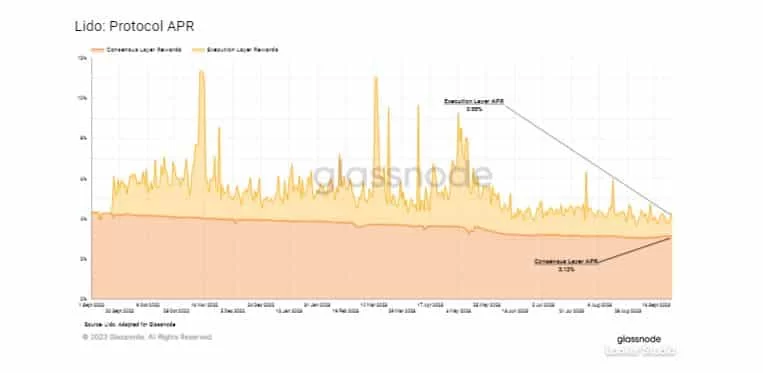After switching to the Proof-of-Stake (PoS) mechanism, Ethereum (ETH) has seen the birth of liquid staking protocols. These protocols solve the drawbacks of conventional staking techniques. Projects like Lido Finance (LDO), which has a locked total value of $14.59 billion, have significantly increased in popularity, according to DeFiLlama statistics.
However, the emergence of liquid staking has significantly altered Ethereum's supply dynamics and affected demand, especially in other DeFi industries like lending. Traditional staking requires a minimum commitment of 32 ETH, which is prohibitively expensive for most people.
As a result, investors take part in a liquid staking pool and assign node operators to stake on their behalf using their ETH. Individuals are compensated with liquid staking tokens (LST), which stand in for the staked ETH.
Users can stake using these tokens, and they also have the option to utilize them anywhere else in the DeFi ecosystem for possibly larger yields. Using its greatest liquid staking protocol, Lido has acquired dominance by staking about 32% of the ETH in circulation, according to a research by on-chain analytics company Glassnode.
This suggests that Lido might receive 32% of all incentives received by the staked ETH, which would result in 32% of freshly created ETH entering the market through Lido. The remaining incentives, or about 28.8%, are delivered to Lido Staked ETH (stETH) holders after the 10% fee split between node operators and the Lido treasury has been taken into consideration.
This might have an effect on Ethereum's anticipated emission dynamics. Individual stakers would get all of the validator payouts absent liquid staking. By using its compound method to reinvest a percentage of total profits, Lido also contributes to balancing the supply of ETH.

If Lido receives $221,000 in freshly created ETH, about $105,000 will be locked back in the staking pool, resulting in a net emission drop of 116,000 ETH, per Glassnode's calculations. Tokens like stETH provide continuous rewards and the ability to utilize them elsewhere. They represent each unit of ETH held in the staking pool. Many experts view sETH as ETH's yield-generating sibling.
Since the demise of the stablecoin Terra USD (UST) last year, it has been noted that the number of new users using ETH and its wrapped counterpart, WETH, has stayed unchanged. On the other hand, since then, demand for stETH and its wrapped variant, wstETH, has surged by 142%. This spike is thought to have been significantly influenced by the Shapella update that was finished earlier this year.








